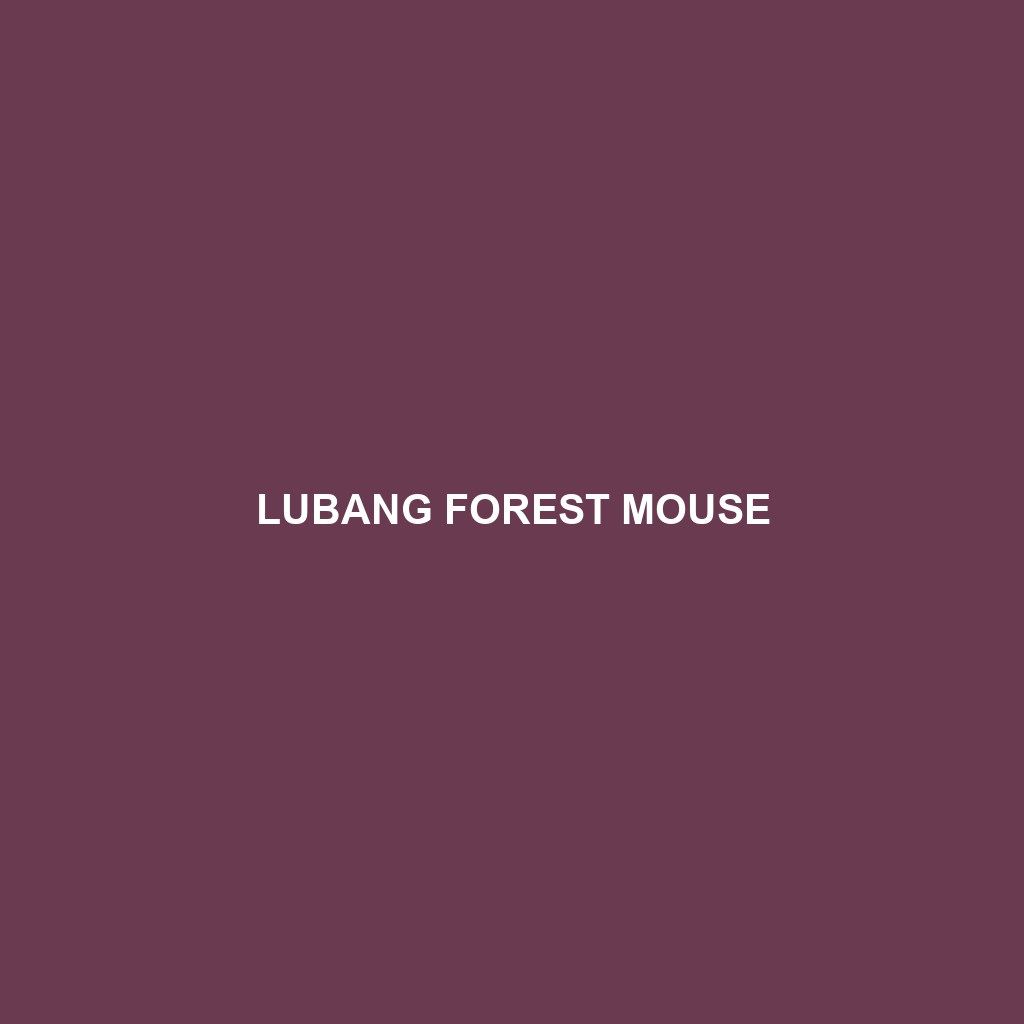Species Description: Lubang Forest Mouse
Common Name: Lubang Forest Mouse
Scientific Name: Apomys lubangensis
Habitat
The Lubang Forest Mouse is primarily found on Lubang Island in the Philippines. This species thrives in dense tropical forests, particularly in areas rich in undergrowth and foliage. The humid climate and complex vegetation structure of the island provide an ideal environment for the survival of this mouse, allowing it to forage effectively and evade potential predators.
Physical Characteristics
Measuring approximately 10 to 15 centimeters in body length, excluding the tail, the Lubang Forest Mouse is a small rodent with a distinctive appearance. Its fur is typically dark brown or gray, with paler underparts, allowing it to blend seamlessly into its forest habitat. One notable feature is its long, tufted tail which aids in balance as it navigates through the dense foliage. The Lubang Forest Mouse also has large eyes and long whiskers, which enhance its sensory capabilities in low-light conditions.
Behavior
The Lubang Forest Mouse is primarily nocturnal, becoming active during the night to evade daytime predators. It exhibits solitary behavior, though it may occasionally be seen foraging in pairs. This species is known for its agility and climbing ability, often found foraging on trees and shrubs. Vocalizations include a range of squeaks and chirps used for communication, especially during mating season.
Diet
The diet of the Lubang Forest Mouse mainly consists of seeds, fruits, and insects. It is an omnivorous species, exhibiting foraging behavior that changes with the seasons. In particular, it has been observed to prefer soft fruits during the rainy season, while seeds and insects become more vital during drier months. This adaptability in feeding habits allows it to thrive in varying environmental conditions.
Reproduction
The Lubang Forest Mouse breeds throughout the year, with peaks during periods of abundant food. Females typically give birth to litters of 2 to 5 offspring after a gestation period of about 30 days. The young are born hairless and blind but grow rapidly, becoming independent within a few weeks. Parental care is primarily provided by the female, who ensures the survival of her young by keeping them in secure nests formed from leaves and grass.
Conservation Status
The Lubang Forest Mouse is currently classified as vulnerable due to habitat loss and degradation stemming from deforestation and urbanization on Lubang Island. Conservation efforts are vital to protect the remaining forest habitats and ensure the survival of this unique species.
Interesting Facts
One fascinating aspect of the Lubang Forest Mouse is its unique adaptation to its environment. It is known to use its keen sense of smell to locate food sources and navigate through the thick underbrush of its forest habitat. Additionally, the Lubang Forest Mouse plays a crucial role in seed dispersal, helping to maintain the health of its ecosystem.
Role in Ecosystem
The Lubang Forest Mouse serves as a crucial part of the forest ecosystem, acting as both a seed disperser and a prey species for larger predators. Its foraging habits help to promote plant diversity by aiding in seed dispersion. Furthermore, the presence of the Lubang Forest Mouse indicates the health of its forest habitat, making it an important species for ecological monitoring and conservation efforts.
